Its a lot of reading but some very interesting points are made here.
I am beginning to believe that Columbas was not the first to touch US soil.
Part VI Annexes - Evidence of Chinese Fleets visit to specific places all round the world
Annex 22 –
Evidence of Chinese Fleets visiting British Colombia, Washington State and Oregon
Maps and star charts
· Queen Charlotte and Vancouver Islands appears on the Waldseemueller (1507) and Zatta maps drawn before Europeans reached British Columbia. On Zatta’s map Queen Charlotte Island is called “Colonie dei Chinesi”.
· Vancouver Islands appears on the Waldseemueller (1507) and Zatta maps drawn before Europeans reached British Columbia
· Jodicus Hondius map (Chinese junk) (Robert Hassell).
· Thomas Jeffreys 1775 American Atlas (Caleb Horn evidence) “Here the Spaniards saw several white and fair Indians in 1774” - Nootka Sound, Vancouver Island
Chinese Records and Claims
Further research needed
Accounts of contemporary European historians and Explorers
· Grotius (1624) reporting Galvão “The people of China… sailed ordinarily the coast, which seems to reach unto 70 degrees towards the north” [viz. as far north as the Bering Straits].
Accounts of Local People
· Squamish Indian accounts of visits of Chinese traders before Europeans (Robert Hassell)
· Haida (of Queen Charlotte Islands) myths – people sailing from West towards sunrise – before Europeans (Paul Wagner).
· Indian tales of Asian men in boats being caught in storms arriving on beaches - Oregon, Washington - (Robert Buker)
· Nu Chal Nuth (region - Nootka) myth about "visitors from afar" who came before the Europeans (Adrian Lee)
· Village of Gambell (old name: Sivouquk) on St. Lawrence Island back in the late 1970's. At that time there were still several old ladies with the ancient tattoo markings on their faces who recounted legends of "pre-contact" sightings of "white men in long white robes".
· Whidbey Island, WA, located in Puget Sound – Local lore: Chinese had logged off large tracts of forest, hundreds of years ago (Joel Gerstmann)
· Indian legends tell of yellow-skinned men thus cast ashore and adopted by the tribes, perhaps hundreds of years before the coming of the first white men's ships.
During the 1800s, it is known that many Chinese and Japanese craft wrecked along the Pacific coast, adding credibility to this legend http://www.lostcoast4x4.org/history.htm – (Dick Yarrington)
· The following is a translation of a Chinook Indian legend, “First ship seen by the Clatsop”, narrated by Franz Boas: “… The son of an old woman had died. She wailed for him for a whole year and then she stopped. Now one day she went to Seaside. There she used to stop, and she returned. She returned walking along the beach. She nearly reached Clatsop; now she saw something. She thought it was a whale. When she came near it she saw two spruce trees standing upright on it. She thought “Behold! It is no whale. It is a monster.” She reached the thing that lay there. Now she saw that its outer side was all covered in copper. Ropes were tied to those spruce trees and it was full of iron. Then a bear came out of it. He stood on the thing that lay there. He looked just like a bear, but his face was that of a human being. Then she went home. Now she thought of her son, and cried, saying, “Oh, my son is dead, and the thing about which we heard in tales is on shore.” When she nearly reached the town she continued to cry. [The people said,] “Oh, a person comes crying. Perhaps somebody struck her.” The people made themselves ready. They took their arrows. An old man said, “Listen!”. Then the people listened. Now she said all the time, “Oh, my son is dead, and the thing about which we heard in tales is on shore.” The people said, “What may it be?” They went running to meet her. They said, “What is it?” “Ah, something lies there and it is thus. There are two bears on it, or maybe they are people.” Then the people ran. They reached the thing that lay there. Now the people, or what else thy might be, held two copper kettles in their hands. Now the first one reached there. Another one arrived. Now the persons took their hands to their mouths and gave the people their kettles. They had lids. The men pointed inland and asked for water. Then two people ran inland. They hid themselves behind a log. They returned again and ran to the beach. One man climbed up and entered the thing. He went down into the ship. He looked about in the interior of the ship; it was full of boxes. He found brass buttons in strings half a fathom long. He went out again and called to his relatives, but they had already set fire to the ship. He jumped down. Those two persons had also gone down. It burnt just like fat. Then the Clatsop gathered the iron, the copper, and the brass. Then all the people learned about it…”- This translation appears to provide an insight into pre-Columbian visits to the New World by foreigners with the sophistication to smelt copper and also possible reference to the mylodons and vegetation believed to have been carried by the Chinese fleets. (Catherine Herrold Troeh)
- According to the oral history from the Senaca Indians, the Chinese first landed on what is now the Washington Oregon coast before either the Norse or Columbus got here. Apparently a small craft landed on the west coast during summer months and met the local Indians. The locals were friendly and helped the visitors with their needs. The sailors then apparently returned to China safely because at a later point in time a large naval force arrived in the same coastal area. A fleet returned during the winter months expecting a similar welcome. However the naval party was wiped out in an Indian attack. According to the gentleman, this coastal area was inhabited by a peaceful tribe during the summer, but by the winter, the war-like Crow had descended from the plains due to extreme winter weather in the plains. The Senaca Indian indicated that some tribal members still have helmets, breast armour and other artifacts from that landing. The tribal area for this gentleman is in Minnesota. (Frank Fitch, Elko, NV)
- A reader comments how various Aboriginal groups on Vancouver Island look distinctly Chinese compared to their neighbouring natives. In addition, cave burials have been found along the west coast of Vancouver Island with distinctly Chinese relics. In size and stature, these skeletons are different from the statue of native peoples along the coast. – David Buchan
Linguistics and languages common to China and New World
· Squamish Indians have identical words to Chinese, more than 37 examples. E.g., tsil (wet); chin (wood); etsu (grandmother).
· Inuit = Yin uit (people from Yin) (Martin Tai).
· Haida and Aleut people have same language
·On the arrival of the Europeans to the east coast of American they heard the local Indians speak of ‘moccocine’ being the skin stiched foot wear. The Mongolian word for their foot wear is ‘managocine’ which translated into English means “ Our foot wear” (Dorsha Unkow)
Shipwrecks, Chinese anchors and fishing gear found in the wake of the treasure fleet
· Long Beach wreck - earliest accounts say it was made of teak and carried a cargo of rice (R Hassell).
· Point Adams (Clatsop Beach) (Ed Mitchell)
· Asian pot wreck (H Williams) - 1979 trawler Beaufort Sea hauled up several shards of wood and a large urn later identified as Asian - later known as the Asian pot wreck.
· Net floats from Japan arrive on the beaches of Oregon and Washington
· A large anchor has been found in a bay near New Brunswick Canada. National Post, Sep. 18, 2003 (M Burford)
· A reader believes a Chinese vessel sunk about 20 nautical miles off Tofino and Ucluelet, which is off the west coast of Vancouver Island. Ken Brown of Tofino called our source regarding a Chinese vase that Kevin Reide found. Mr. Brown was fishing the same seamount, which he says is sand, when he found a smaller Chinese vase about 11" tall, all brown in colour. Is this a possible site for a wrecked junk? – Doug Hockley
· A reader was told 25 years ago about a wreck of a Chinese junk just north of Sequim, Washington in the Strait of Juan DeFuca. Has anyone heard the same rumour? - Dr. Don H. Anderson
Chinese porcelain and ceramics found in the wake of the treasure fleet
· Netarts Sand Spit, Tillamook County, Oregon - shards of early and late Ming porcelain - University of Oregon Anthropological Papers - Antonia Bowen-Jones
· Washington Potters -nr. Southern Washington coast arrived c.AD1400 and then dissappeared c300 years later.
· Hundreds of ceramic artefacts unearthed in narrow valley between Vancouver Lake and the Columbia River including figurines, pipes, pendants small sculpted heads and decorated bowls. US Institute for Archaeological Studies concluded that they were Asian in form (Hector Williams)
· Chinese vase brought up in a fisherman’s net in the 70’s or 80’s in a village of Ucluelet on the west coast of BC - (Sylvia Hockley)
· A Nez Perce Indian from the reservation in Idaho has told a reader how he was working along the Snake River at Lewiston / Clarkston several decades ago. They came across a hoard of beautiful Chinese relics and treasures including boxes of porcelain of obvious Chinese origin, and very old. He was certain that the items must have been left in the area years before the documented arrival of the Chinese to mine the gold in the mountains southeast of Lewiston - Malvin Joye
· Alaska - Article in the Lowell Journal (Kent County Michigan) dated April 28, 1897, referenced an article in the St. Louis Globe. A Professor Alfred Aldridge was exploring the Kuwalic River when he noticed that a great body of earth had been disturbed as in an avalanche. He found a large number of relics including pottery and walls of dull gray masonry set in mortar. The sandstone blocks were of beautiful symmetry and fairly even in size. He dug into a room where he found more pottery, pots ,vases, cups, plates, jugs, pipes, arrows, spears of odd design, scrapers, hatchets, and drills. Some of the jars were exquisitely shaped and 8 feet tall. He said some of the light brown earthenware was similar to what he had found in New Mexico some years before. Apparently he felt he had discovered a prehistoric city of possible Asian origin. (Larry Wittenbach) Any more information on this site would be appreciated.
Pre-Columbian Chinese jade found in the wake of the treasure fleet
· Pre-Columbian Chinese jade: British Columbia (C405; H070)
Artefacts, gems, votive offerings, coins and funerary urns
· An article from The Daily Colonist, Victoria, BC, Thursday August 31st, 1933 describes a Buddhist relic found in Northern British Columbia, and now in the possession of John Forsythe. The Chinese talisman dating back to 200 BC was, found in an oriental jar with other early Buddhist relics, entwined in the roots of an uprooted tree several centuries old. (Lester Lee)
· Tens of thousands of Chinese copper coins found either buried or attached as ornaments to native Indian and Chinese objects on Vancouver Island – dated pre-Columbus.
· Chinese talisman and lamp dated pre-Columbus (Vancouver island).
· Bronze figurine of Garuda – pre-European arrival (John Grubber).
· Chinese storage jars hauled out by fishermen at Tofino off w. coast of Vancouver Island (Hector Williams).
· Chinese clay vase, Vancouver Island (B Morelan).
· Chinese coins on BC coast that predate 1421 (G Berteig)
· Ancient Chinese bronzes (John Grubber)
· Nome and the Natatorium: two small Chinese necklaces found buried deep underground with wooden decorations
· Shu Lao Buddha lamp, Vancouver Island
· A Chinese artefact which was discovered in Washington State, USA, in the mid 1800s, in the Puyallup area. It was found by a family of new settlers to the area while they were digging a well soon after arriving. A Chinese calligraphy expert/artist believes this is a chop, or seal from long ago. He also believes he recognizes the characters for "emperor" amongst others on the seal. The artefact was studied by Dr. S.L. Lee of
www.Asiawind.com, an expert in Chinese calligraphy and an artist - Stephen Duncan
· Chinese coin - there is an archaeological site about an hour west of Prince George, British Columbia, Canada, called Chinlac. Chinlac was a centre for the Carriers, and was abandoned before European contact. In the 1990's, one of the seven longhouses was excavated, and they found a Chinese coin from the 1200's - Stan Anonby
· A report on eight sites in Oregon where Chinese coins have been found over the years. Also Mongolian skulls were found at Raft Cove, just a little south of the NW tip (Cape Scott) of Vancouver Island.
http://members.shaw.ca/jfrobinson/ABCR.htm - Bob Ward
· Burial site - An article in the local Seattle Times, December 2004, stated how an American Indian burial site was being excavated at a village known as Tse-whit-zen. 'The excavation inadvertently unearthed Tse-whit-zen, the largest prehistoric Indian village ever discovered in Washington, portions of which date back more than 1,700 years. … the history of the explorers who first made contact with the tribes’ ancestors on these same shores, bringing smallpox and other diseases that filed the tribal graves being unearthed today.' The other site is the site of the Lower Elwha Klallam Tribe. '…We have found whale out here on which our ancestors had feasted. We found all kinds of trade materials from ivory to Chinese coins, which our medicine men in those times took in trade for services that they may have provided to those that went by in the ships that came to the harbour areas here.' The site of the village is at Port Angeles in Washington State. The above is clear reference to pre-Columbian visits and trade on the west coast of N. America - Roger Hodge
· The Nez Perce Indian Reservation, Idaho has a 300-year-old Nez Perce dress that supposedly had Chinese beads on it. It is only about 300-350 miles from the west coast (Seattle area) and they are known to have traded with coastal tribes. That is also about the time they acquired horses (around 1700) from the Spanish via the Shoshone Indians who live a little further to the south east. So the beads could have come from either direction if not directly from the Chinese themselves.
The Nez Perce are well known for horse breeding. It is said that they mix Spanish horses with horses from Mongolia/China. (David Classen)
· We have been told of a piece of bronze-work that was hauled up by a fishing boat near the mouth of the Strait of Juan de Fuca, in the early to mid 1970s. At the time, it was thought by archaeologists from Washington State University to be of Chinese origin, and possibly a ship's decoration of some kind. The archaeologists, led by Dr. Richard D. Daugherty of WSU, had hoped to acquire the relic, but it was sold to a private party. Does anybody have any more news on this item? Steven C. Brown
· An archaeology student working on Kodiak Island stated that the Aleutiq natives, (also known as the Koniag), of the Kodiak area had Chinese coins when the first Russians arrived there. More information could be gleaned from the Aleutiq museum in Kodiak. (Dan DeRoux)
A reader has brought our attention to a very interesting article with accompanying illustrated plate from the Smithsonian in 1892. The citation is “Proceedings of the United States National Museum”, Volume XV, No. 899, 1892, page 221 (with Plate XXIV). This article, titled “Chinese Relics in Alaska” by Lieutenant T. Dix Bolles of the USN, describes a wooden mask that was donated to the Smithsonian in the 1880s. It was taken from a grave located near Chilcat Village. The mask includes two large bronze Chinese Temple Coins, used as the eyes in the mask. The age of the mask was determined by discussions with the local Chilcats, who indicated that the grave was that of a medicine man who had died two hundred years previously. If true, that would date the mask to the late 1600s. Bolles writes “… I am free to confess that I see no other possible conclusion to draw than that these coins were obtained two hundred years ago, and the natural surmise is that they came from a junk driven on the coast, Chinese most likely… To those who doubt the advent of junks on the West Coast at this early date, these facts will probably not be satisfactory, but it will be necessary for them to break down by direct evidence such a strong plea…” - James L. Huesmann
Stone buildings, artefacts, canals and aqueducts
- Stone markers found on the Queen Charlotte Islands at Masset on the northern tip of Haida Gwaii. (Christine Yates)
- Stone markers: British Columbia coast; Queen Charlotte Island (Margo Donovan).
- A boulder similar to the Moeraki boulders, on Long Beach on the West Coast of Vancouver Island, BC - The locals appear to have mounted it on a small wooden platform. It is roughly the same size and proportions as the Moeraki boulders, as well as those found at Cannonball River - David Lorrimer and Douglas Muir
- There are original source materials of the 18th century French discovery of carved stone pillars in the woods of Eastern Canada. These pillars were covered in Tartarian script. French Jesuits visited these pillars and eventually carried one off to France for study. It was considered very unusual that Asian artworks were left behind in the forests of Canada – more research needed (Roddy Heading)
- Possible Cannonballs / Counterweights - Dr Muir has had a good look around the west coast bays & found a collection of odd boulders in Florencia Bay, Canada, plus a totally round 1m diameter ball cut out from igneous rock. This ball is on top of the 50` high cliff surrounding Florencia Bay. We consider the 1m diameter ball to have been the work of a skilled stone mason.
- The Cannonball River got its name from a large number of round sandstone rocks at the mouth of the river where it debouches into the Missouri River them. Some of them were very like others on the Cannonball River, yellow sandstone, fairly small, and quite upstream of the Missouri. The Cannonball is far too shallow to have been traversed by anything other than a canoe or fleet of canoes. But some of the "Cannonballs" found at the mouth (in the 1930s and 1940s) were not only much larger, but made of different and much harder material than the sandstone cannonballs – possible Chinese sail counterweights. There are also persistent legends among the Mandan Indians near Bismarck of the Great Ship that sailed up the river – Rev. H R Stockert
- The petroglyphs of Afognak are said to contain Chinese characters – Joseph Davis
- Northwestern American and Canadian buildings appear similar in appearance to Chinese post and beam construction. Furthermore, decorations on their buildings appear to be similar to designs shown on the fleet ships. Strong resemblance to South Seas, Tiki style characters on the posts of one of the buildings. (Richard Schulte)
- Washington State: In William R. Corliss’s book, “Ancient Man: A Handbook of Puzzling Artifacts” there is a reference to a square, stone enclosure, 200 feet on each side, with two square pits within, located at the confluence of the Klickitat and Columbia rivers in Klickitat County, south-central Washington State, USA. A report describes remnants of cedar wood at this “fortress,” and quantities of arrowheads in the vicinity, but said the construction was ancient, beyond the memory of Native Americans in the late 19th Century. Could this site have any possible connection to China? Aerial photographs of the site as it appears today (much altered by a higher river level, and construction of nearby highways and railroads, but with three lines of trees appearing curiously close to the site as mapped in the Smithsonian report) are available on-line at:
http://terraserver.microsoft.com/image.aspx?11&Z=10&X=1582&Y=12654&W=1 (Daniel Spatz)
- Stone statue discovered on bank of Tennessee River near the present Pickwick Dam. It is a square limestone rock about 18+" by 10" by 6" thick with a Chinese looking face carved on the front, v-neckline robe. On the back, the hair is carved into a ponytail with a one "tie" holding it together. (Gary Shannon)
- A reader writes in discussing the wealth of signs of a pre-Columbian Chinese presence in Oregon. She describes anomalous stoneworks, for which no explanation is forthcoming. Also a series of low, 3 to 4 foot high fences, which were not built by locals nor the native peoples of the area. They describe 3 pyramidal hills, on private land, which were excavated by the University of Oregon prior to the 1970's. They are manmade structures covered with masonry, then covered in earth. Supposedly, Mayan-like items were excavated from the sites. The paper published on the excavation contained an illustration of a statue found there that could have been Oriental or Chinese. Very old Chinese pottery is often found in the area. In Central Oregon, between Redmond and Powell Butte, about a mile west of Powell Butte on the north side of the highway, are foundations in the desert that are constructed of cut stone, in which grow centuries'-old juniper trees. There are also such stone foundations at the foot of the buttes in the area and ancient wells that have long dried up. Some are tilted as if they had been struck by earthquakes. Asian-type wild horses were still running wild on the deserts between Redmond and Prineville in the 1930's and 1940's. They were said to be Mongolian horses. They were small, short-bodied, with big heads and were smaller than wild ponies, or any of the other small wild horses that ran in the area. There are plants, grasses and wild herbs characteristic of the Himalayas and China in the area just south of Mohawk, Oregon - Dr. Judi West
Mining operations found by first Europeans when they reached the New World
Further research needed
Advanced technologies found by first Europeans on arrival in New World
Further research needed
Plants indigenous to one continent, found on another
· The Vancouver Independent, Vancouver, Washington Territory, May 8th, 1884, has an article about the Wapato, a potato like vegetable that the Natives harvested in the lakes. The article makes the assumption that the Wapato is a native plant of China, and that the Chinese must have brought it (to the Oregon Territory) at one time. It claims the Chinese immigrants in the area during this period (1884) buy the Wapato from the natives, and prefer it to the potato, even though its cost is much greater. (Robert M. Thomas)
· Sequoia trees from China (now 600 years old)
· Reader Carlos Jimenez was puzzled to come across a sculpture of a pumpkin when visiting an exhibition of the famous Xi''An terracotta warriors from Emperor Qin Shi Huangdi''s burial complex. The objects in the exhibition are all dated to be from the Qin Dynasty (221-206BC) or the Han Dynasty (206BC-220 AD). If, as most encyclopedias will tell you, pumpkins originated in the Americas, how did this sculpture come to be part of this fascinating collection? Any ideas would be greatly appreciated. To view the sculpture please click on the following link or visit the gallery section:
http://www.1421.tv/gallery.asp?Section=Stone buildings, mortar and carvings
Animals indigenous to one continent, found on another
· Babiroussa – wild pigs of Sulawesi found buried in chieftain’s grave (Vancouver Island).
· Queen Charlotte Islands – small deer appear Asian - await DNA test (G Bertieg).
· Wool dogs (E Miller and Susan Crockford)
· Ray White, DVM, a horse breeder and veterinary surgeon, was very strong in his belief that the American horse never was completely extinct as commonly believed, feeling that the Appaloosa of the Pacific Northwest was of Asian extration. The Appaloosa, used almost exclusively by the Nez Perce Indians was, in Dr. White's opinion, more of an Asian breed than Spanish, as are most Mustang - Austin J. Smith
· A website visitor remembers reading an art book 30 years ago while doing research on the Nez Percé Indians. He does not have the reference anymore, but the author suggested the possibility that the Appaloosa horse, bread by the Nez Percé, was Chinese. This horse was a recognizable breed by the time Lewis and Clark passed through the area. These Indians were the only example of native American Indians that were breeding horses. They understood breeding the best stallions to the best mares and practiced gelding inferior stallions. All other native Americans caught their horses wild or stole them from each other. The Nez Percé horses were highly prized by their neighbours. They were known for their speed, endurance and surefootedness. They were short legged, stocky and had large heads and thick necks. Their spotted rumps are the defining characteristic today. All these characteristics were common with the "Heavenly Horse" from China - Charlie Snyder
· Legend popular in Oregon historical circles is that a rhino was found on a Pacific Northwest beach, that was being transported back to China but was there due to a shipwreck - Byard Pidgeon
· The Nez Perce Indian Reservation, Idaho has a 300-year-old Nez Perce dress that supposedly had Chinese beads on it. It is only about 300-350 miles from the west coast (Seattle area) and they are known to have traded with coastal tribes. That is also about the time they acquired horses (around 1700) from the Spanish via the Shoshone Indians who live a little further to the south east. So the beads could have come from either direction if not directly from the Chinese themselves.
The Nez Perce are well known for horse breeding. It is said that they mix Spanish horses with horses from Mongolia/China. (David Classen)
Distinctive artwork carried from continent to continent
· Totem poles in Seattle, Vancouver and up the coast to Alaska are dentical to those from Wuhan, China (Geoff McCabe)
· Buildings similar in appearance to Chinese post and beam construction. Decorations on these appear similar in designs shown on fleet ships (Richard Schulte)
· A reader points out how there are strong similarities between Northwest Coast Indian art forms and Chinese representational forms of animals, particularly in bronze work of the Shang and Chou periods
· According to one reader, the most prominent and permanent display in the Anthropology Museum of British Columbia (Vancouver), is the birdman. It is the Haida native Americans' legend that all people were derived from this birdman. This is apparently similar to the Hemudu culture of China. If one compares the Chinese Taotie (ToTim) motif and the North American natives' totem motif, there are clear similarities. In China, Totim is one animal symbol (one of a Dragon's nine sons). In North America, it became many symbols including bears, birds, people etc. The cultural connection between the Totim on Shang dynasty utensils and the totem poles of North America is strikingly similar - Siu-Leung Lee
Customs and games exported from China to New World
· Iroquois custom of offering white dog to heaven at New Year – as in China
· Chinese secret societies
· Song similarities
· Similarities with potlatch ceremonies
· Wampum (compare with quipus in Peru and China) (Ranking).
· Monkey God style masks used by people of Northwestern American and Canadian – Chinese influence? these NW Americans also have very oriental features. (Richard Schulte)
· Pacific Northwest Indian musical instruments i.e. the drum are exceptionally similar that of the Chinese & Japanese - Doug Hockley
· The Haida played a variation of the game "pick-up sticks", which is of Chinese origin. It's commonly attributed to the ice-age land bridge across Bering Strait, but I would personally think that the game would be much more widespread amongst the aboriginal people of North America if this were so. As it is, the game existed amongst the Haida, and amongst tribes in California. (Michael Roellinghoff)
· The Canadian Plains Cree – a reader comments on how their sacred colours are also red, yellow, black, and white, as with Buddhism. In ancient times large stone wheels were laid out on the ground, the spokes of which pointed in four directions. Each direction is represented by one of the sacred colours: yellow is connected to south, black to west, white to north, and red to east - Judith Lishman
Armour, metal weapons and metal implements found in the New World
· Alaska – the Yup'ik and other Native Alaskans say that the detaching spearhead used by the seal and walrus hunters is actually a Chinese invention taught to them a long time ago – Joseph Davis
· The arts of the Haida people who populated the Queen Charlotte Islands in British Columbia, Canada are aesthetically similar to those of east-Asian cultures.
The Haida also used a type of armour common in Bronze Age China.
Apparently they acquired this armor first, and then parts of it were
incorporated into armors used by tribes as far south as California. This
would strongly suggest contact with Asia during the Shang or Zhou dynasties
- so, hypothetically speaking, 3,000 years ago. If true, the date 1421 is
simply a half-way point between Asian-American contact. (Michael Roellinghoff)
- Reader from Victoria, Southern tip of Vancouver Island mentions that the Haida Nation had body armor that is very similar to armor in ancient China. There is a picture on this website:
www.civilization.ca/aborig/haida/havwa01e.html
The armor dates back to before 1421 but may indicate a link between the two areas. Haida Gwaii is a world heritage site as the Haida have continuously lived there for at least 15,000 years, possibly longer. They actually have oral memories of the global warming and glacial melting that happened 12,500 years ago which raised sea levels and formed Hecate Strait, which until then was part of their land. Perhaps they were already known to the Chinese. (Jacqui Ward)


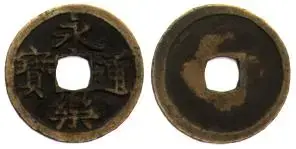



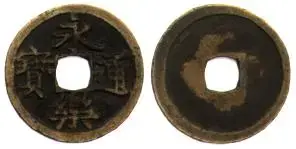
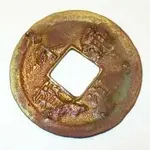

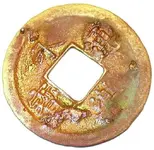

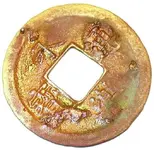


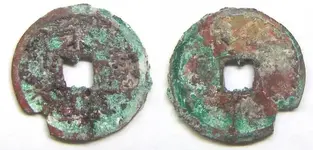
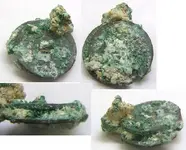
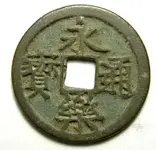
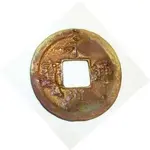
 It does seem to have some differences than the ones you pictured as a match.
It does seem to have some differences than the ones you pictured as a match. 